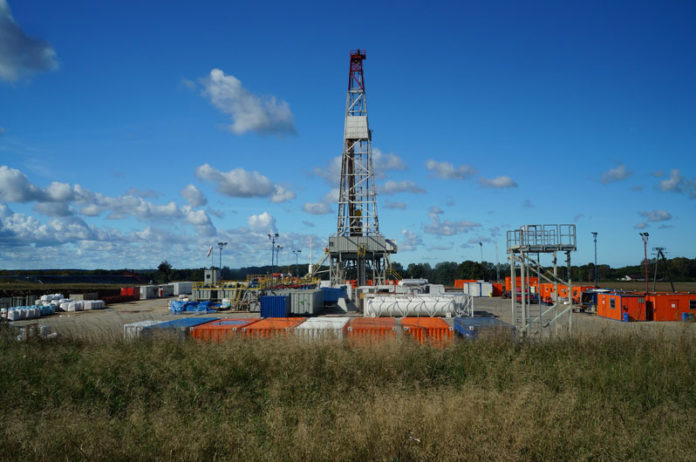Wireline is a flexible metal cable used for various well completion and intervention operations such as fishing, conveyance of downhole tools, and logging.
What are the Advantages of Wireline?
Speed – wireline is often used instead of coiled tubing or service rigs because the run in hole and out of hole speeds are quicker with wireline. In addition, rig in and rig out times are also shorter for wireline units.
Lower cost – wireline is usually cheaper than coiled tubing or service rigs because less equipment and people are required for the job.
Small footprint on location – since less equipment is required to perform wireline jobs, it takes less space on location.
Related: 18 Most Common Coiled Tubing Applications
What are the Disadvantages of Wireline?
- Doesn’t perform well in long lateral wells.
- Can’t rotate or apply force.
- Can’t circulate fluid through the wireline.
- Potential of failure during the operation if the wireline used is not suitable for the job or the limits are exceeded. Similar to coiled tubing, both fatigue and corrosion will dictate how much life you can get from a wireline. Both need to be tracked to avoid failures during the operation.
Related: What is Coiled Tubing?
Common Wireline Operations
Setting/retrieving plugs – pump downs with the wireline are very common during the plug and perf operations.
Fishing – retrieving various pieces of equipment left downhole.
Running perf guns – creating holes in the casing so that hydrocarbons can flow from the formation into the wellbore.
Liquid or fill tags – performed to determine the fluid levels in the well or the depth of obstruction.
Logging – the vast majority of the wireline operations are logging jobs and may include running gamma, nuclear, sonic, resistivity, and other logs.
Gamma tools are used to find information about the near-wellbore formation by measuring naturally occurring radiation in the rocks.
Nuclear tools emit radiation and then record how the near-wellbore formation reacts to it.
Nuclear logs are most commonly used to find out the porosity of the formation and rock density.
Resistivity logs are used to distinguish between the hydrocarbons and water in the formation.
Cement bond logs (CBL) – are used to measure the cement integrity between the casing and the formation.
Chemical cutting – wireline can be used to help retrieve stuck tubing in the well ( ex. coiled tubing) by performing a chemical cut.
The chemical reaction is initiated at the stuck point either by sending an electrical signal or by activating it mechanically.
Related: What is Mud Logging?
Types of Wireline
Slickline – single solid non-electrical metal cable used for the operations that don’t require a lot of tensile force.
Braided line – a stronger line made of multiple strands of wire and used for fishing and plug retrieval.
Single or multi-conductor – has electric cable inside that can be used to send or receive signals from the downhole tools. Used for running different logging tools. Usually covered with armor wire to prevent damage to the conductor during the operations.
Related: What are MWD and LWD in Oil and Gas?
Wireline Equipment
Wireline unit – comes in different configurations depending on the job type and the well location.
The main purpose of the unit is to provide pulling power to move the wireline in and out of the hole.
The unit has depth and weight counters. Usually, a special wheel is used to keep track of the wireline depth.
Hoisting mechanism or crane – used for lifting wireline equipment.
Powerpack – used to provide power for the operation. Can be powered by diesel or electricity.
Sheaves – used to guide wireline into the wellbore.
Stuffing box – the tool with special seals used for pressure control on slickline operations. It allows wireline to be run into the well while preventing the well fluids from escaping.
For braided line operations, a grease injection control head is used instead of the stuffing box.
A grease is injected to create a seal around the braided line.
Blow out preventer (BOP) – used for pressure control in case something unexpected happens during the operation and to prevent blowouts.
The type of BOP used will depend on the well pressure.
Lubricators (riser) – used as a barrier to contain downhole tools (similarly to lubricators on coiled tubing units).
The length of the lubricator will depend on the length of the tool and the fish when fishing.
Related: How Do Blowout Preventers Work?
Basic Wireline Tool String Components
The wireline tool string components will depend on the job type but here are the basics:
Knuckle joint – used to give more flexibility to the longer wireline tools during the jobs on highly deviated wells.
Mechanical jars – provide extra tensile force.
Stem (weight bar) – used to add extra weight to the tool string to help it overcome well pressure and friction.
Rope socket – used for attaching wireline to the tool string. In some applications, it is also called the cable head. It can also act as a disconnect when the tool gets stuck in the well.
Wireline tool – the tool required for a specific job.
